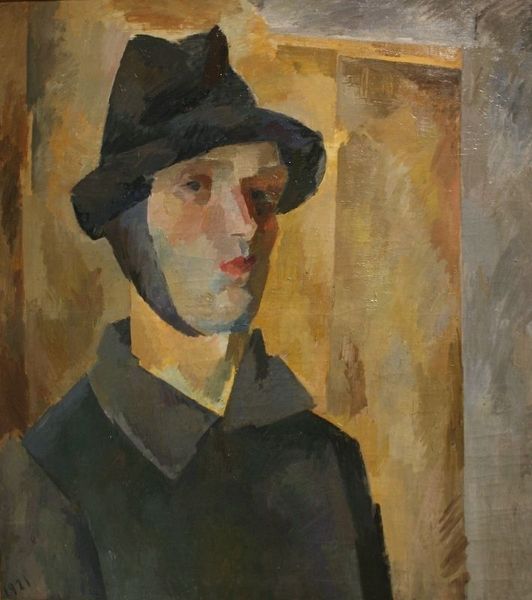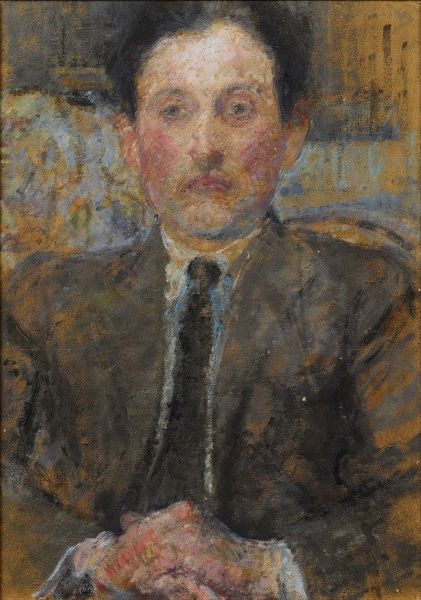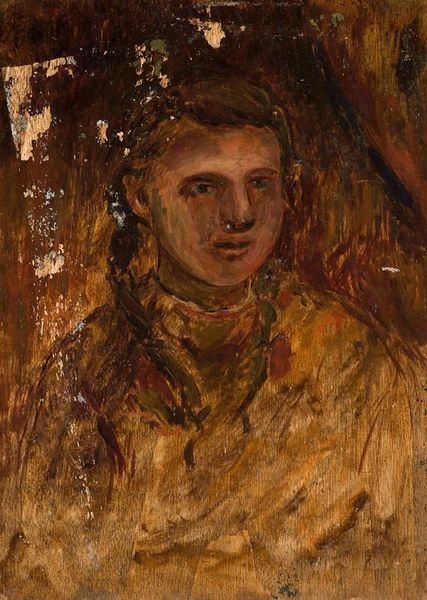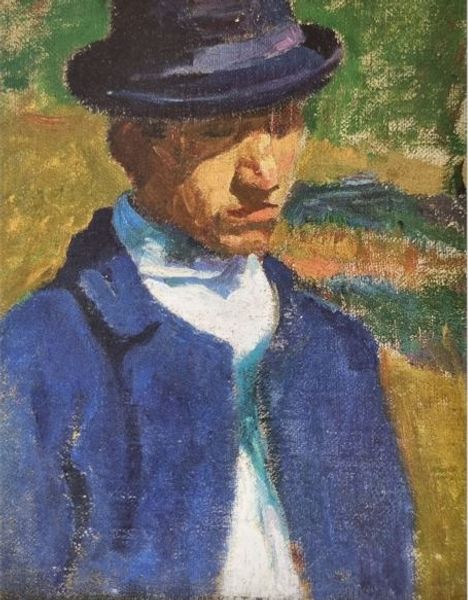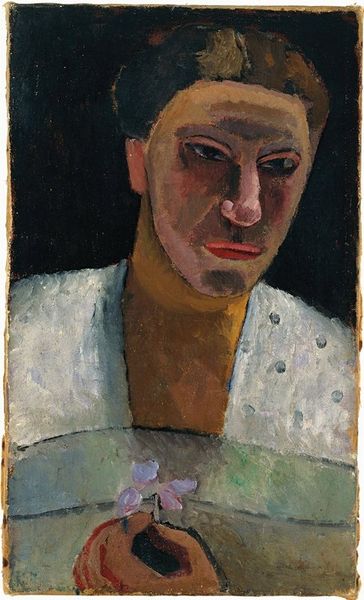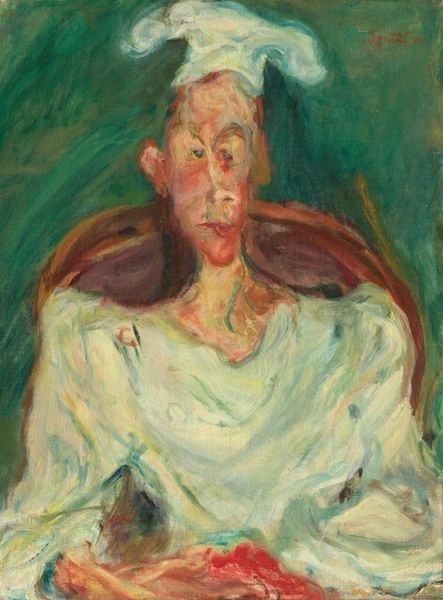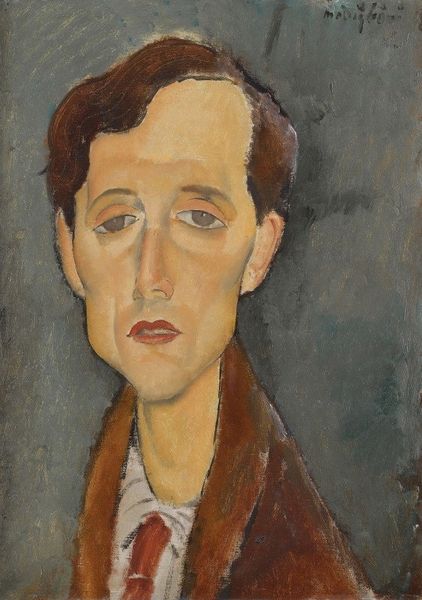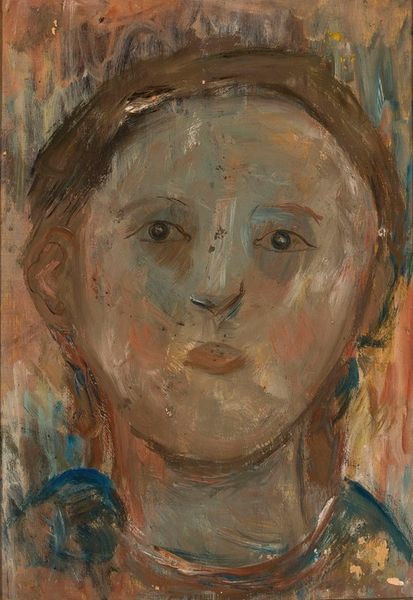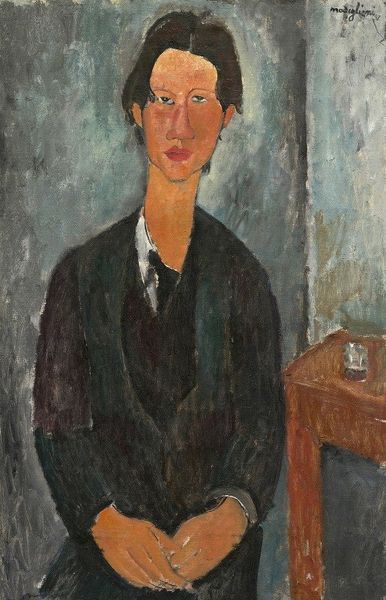
oil-paint
#
portrait
#
self-portrait
#
oil-paint
#
oil painting
#
expressionism
#
modernism
#
fine art portrait
Copyright: Public domain US
Curator: Looking at this artwork, I'm immediately struck by its somewhat ghostly quality, a haunting simplicity. The subdued palette and almost blurred features give it an ethereal feel. Editor: This is George Bouzianis’s "Portrait of the Painter Waldmulle," painted in 1923. It’s an oil painting, a fine example of Expressionist portraiture. Let's consider the context of its creation—post World War I Europe and its socio-political upheaval, marked by industrial advancements but still rife with labor exploitation. Curator: That explains some of the gravity, the weight of the times evident in the sitter’s eyes—or, where eyes should be, because there's barely a discernable face beneath that dark hat. It’s almost a study in concealing rather than revealing. The thick impasto is telling. Bouzianis built this image layer upon layer. I wonder if it's the painter, or the working artist we are seeing here? Editor: Good point. Bouzianis certainly draws upon a material vocabulary of his day. In looking at that heavy application of oil paint, the visible brushstrokes, are the artist foregrounding not just the emotional intensity but also the labor involved in creating the artwork itself? We are drawn to see the artistic creation as work. Curator: Absolutely, there's an inherent tension in his painterly decisions—an expressionistic fervor restrained, somewhat trapped beneath the surface. Almost like staring at an echo of a portrait... Can we discuss the symbolic absence, too, or lack of symbolic forms within its presentation? Editor: Symbolic absences? The lack of detail in the features could also be read as an interrogation of portraiture itself, challenging its traditional role as a conveyor of status or personality. Or, think of oil paint production—its impact, then consumption by an artist and the market. Curator: True. Rather than a record of identity, we see a more potent comment on existence itself... fragile, impermanent, and blurred. It almost embodies modernism's challenge to see humanity and self in the face of industry. Editor: Considering Bouzianis’ "Portrait," the lens of labor and production adds a richer dimension. Curator: It’s been a darkly illuminating conversation! This painting has revealed deeper truths in its concealment, a testament to art's ability to unsettle and provoke thought.
Comments
No comments
Be the first to comment and join the conversation on the ultimate creative platform.
